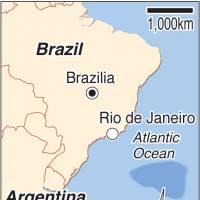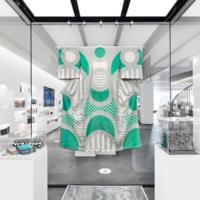The Japan Agency for Marine-Earth Science and Technology and the Brazilian government recently announced the discovery of a large mass of granite on the seafloor off Rio de Janeiro — a landmark finding that suggests a continent may have once existed there because granite normally forms only on dry land.
Experts say it's far too early to conclude this is evidence that the legendary island of Atlantis existed. This is because the seabed where the granite mass was found is estimated to have sunk into the sea several tens of millions of years ago, much earlier than legend has the island disappearing beneath the sea.
But how did the Japanese agency get involved in this intriguing discovery in the first place? Following are some facts regarding the organization and its activities:
What is the Japan Agency for Marine-Earth Science and Technology?
Headquartered in Yokosuka, Kanagawa Prefecture, the agency conducts research and development in marine sciences.
Formerly known as the Japan Marine Science and Technology Center, JAMSTEC was launched in April 2004 as an independent administrative agency administered by the Education, Culture, Sports, Science and Technology Ministry.
What was JAMSTEC doing off the east coast of Brazil?
The agency sent a mission to the area as part of its one-year around-the-world voyage project dubbed "QUELLE2013," which stands for Quest for the Limit of Life. "Quelle" also means "roots" or "origin" in German.
The yearlong mission involves exploring hydrothermal vent fields, submarine seepage sites, deep-sea trenches and other extreme environments to explore the habitable limits of life and its unique survival strategies.
They set out Jan. 5 on the support vessel Yokosuka, heading for the Indian Ocean, the South Atlantic, the Caribbean Sea and the South Pacific Ocean.
So was it just happenstance that JAMSTEC was involved in the recent discovery?
According to a JAMSTEC official, the finding was "not totally a coincidence."
They had been aware that Brazilian scientists had collected what appeared to be granite in the area, but it remained a mystery whether the granite was intrinsic or whether it had been dropped by ships passing through, the official said.
The discovery was made by a deep-submergence vehicle called the Shinkai 6500, owned by the agency. One researcher who had been aboard the sub was quoted by the official as saying they were admittedly "somewhat skeptical about granite being there."
What is the Shinkai 6500?
The submersible was developed "to study seafloor topography and geology and research deep-sea organisms" in the sea not only around Japan but in the oceans around the world.
As the name implies, the Shinkai 6500 can dive to depths of up to 6,500 meters with two pilots and one researcher aboard. It entered service in 1991 and had made 1,300 dives as of 2012.
During the round-the-world project, the manned submersible is to be in the Caribbean Sea from June to August. After temporarily returning to Japan for a battery replacement from August to September, it is scheduled to travel to the Tonga and Kermadec trenches in the South Pacific and to finish the journey in December.
What other kinds of research does the agency conduct?
It has several institutes and projects. For example, the Research Institute for Global Change observes, analyzes and predicts global environmental changes, while the Institute for Research on Earth Evolution explores the interior of the Earth to develop a comprehensive understanding of our planet.
The agency has also set up a project to do research on earthquakes and tsunami for disaster prevention.
Who heads the agency, and how big is it?
The president is Asahiko Taira, a former chairman of the Geological Society of Japan. Taira, whose field of research includes marine geology and plate tectonics, received the Japan Academy Prize in 2007 for research on the formation of the Japanese archipelago.
The agency has a staff of 1,055, including 383 researchers. The initial budget for the current fiscal year stands at ¥40.2 billion.
Information from Kyodo added



















With your current subscription plan you can comment on stories. However, before writing your first comment, please create a display name in the Profile section of your subscriber account page.